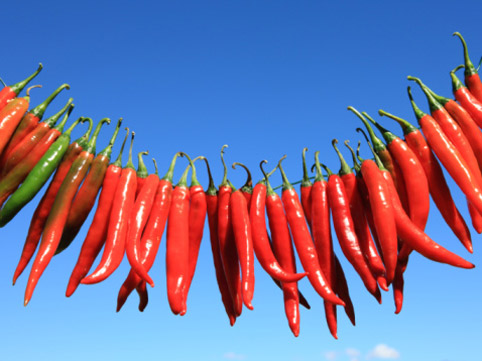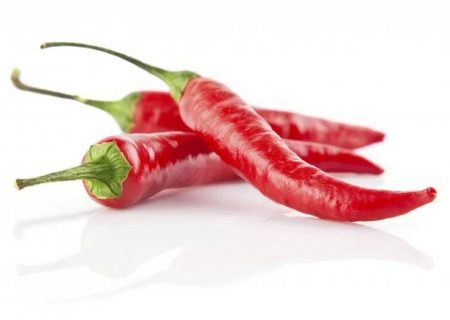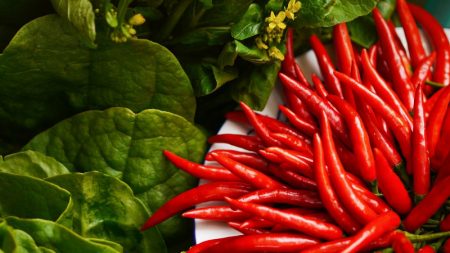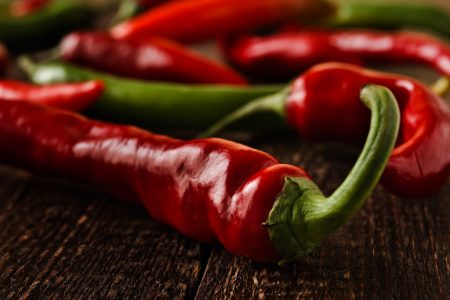 The most common spice in many nations is considered hot chili. It has been widely used not only in the beauty industry, in cooking, but also in personal plots.
The most common spice in many nations is considered hot chili. It has been widely used not only in the beauty industry, in cooking, but also in personal plots.
Pepper cultivation will appeal to even novice gardeners. Miniature plant bushes will decorate your homestead or window sill, as well as delight with spicy peppers.
| Interesting to know! Chili pepper is a term that summarizes a number of plants, rather than a single variety. Fruits may vary in shape, color, pungency, and taste. Each summer resident chooses a variety depending on their own gastronomic preferences. |
Content
Selection of seeds for sowing
First you need to get the seeds of the plant. There are several options: collect from already planted plants or purchase in a store. Seeds should be large without obvious defects, chips and damage. If you see multicolored spots on the surface of a seed, this means that drying was carried out using high temperatures. Remember that this causes great damage to the seeds. Self-collection of seeds is done when the pepper has a brown tint. The fruit is cut and the seeds are shaken out of it. It is better to protect the eyes and skin, since ingress of pepper particles can cause burns. Be careful!
Growing chili peppers
In terms of cultivation, chili peppers are very versatile, as a balcony, windowsill and open ground are perfect for him. First of all, to accelerate the ripening process, it is worth taking care of seedlings. The best period for this will be February. Plants intended for planting in the open ground, just gain strength until spring. For the speed of the process, the seeds are spread between wet wipes or moist pieces of gauze. Thus, leaving the seeds for several days, you can forget about them. The main thing is to distribute them evenly so that they swell evenly. Instead of ordinary water, you can use chamomile tea. For sowing germinated seeds use a large container, pre-treated with hot water. It is better to purchase soil in the store, so it will be safer for the plant. At the bottom of the tank lay drainage. Seeds are planted to a depth of 1.5 cm. From above, spray water from a spray bottle and cover the pot with glass. After about a week, the first sprouts can be expected. Transplant the peppers into a separate pot after the formation of the first leaves. Chilean pepper loves the light, so you should take care of this in advance. The temperature in summer is up to 25 ºС, and in winter - 18ºС. Watch out for air circulation, but avoid drafts.
The necessary conditions
Chili pepper does not require painstaking care, but you should still follow some rules, namely:
- you should not choose deep containers for growing, otherwise all forces will go to the root system, and the tip will remain underdeveloped;
- use plastic pots with drainage;
- moisten the soil, but do not overflow;
- feed the plant with the same preparations as for tomatoes
- pinch the top when it reaches 20 cm.
Main pests
The greatest danger is a disease called the "black leg". Withering may also occur. To avoid such situations, maintain optimal temperature and humidity conditions. The black leg is expressed in the darkening of the stem. The leaves fall, and the plant dies rapidly. Unhealthy individuals are best eliminated immediately so that they do not infect healthy ones.In addition to the "black legs", gardeners are wary of aphids and spider mites. In this case, wood ash is perfect.
Pepper benefits
The main advantage of chili is that almost all of its species bring crops all year round. Peppers are excellent antioxidants; they contribute to the elasticity of blood vessels, lowering blood pressure, and effectively reduce the symptoms of colds. Chile fights depression well and produces endorphins that relieve pain and insomnia. The fruits are rich in iron, magnesium, potassium, vitamins A, B, C. Chile removes toxins accumulated in the body, contributes to weight loss due to the minimum calorie content. Therefore, getting at least one chili bush is always a great idea.
Chili Disadvantages
Not everyone will appreciate the bitter taste, chili is especially harmful for people with diseases of the gastrointestinal tract, because the mucous membrane is irritated. Chile should be consumed sparingly and without much fanaticism. With dermatitis, do not use creams and ointments containing this component. When preparing meals, do not touch the eyes and body so as not to get burns. Also take care of open wounds, as the disease when the pepper gets may be delayed. If hot pepper particles get on the code, rinse the affected area thoroughly with water.
Gardeners reviews about chili peppers
Rose, 61 years old, Stary Oskol:
For the first time I saw such a pepper from a relative on a windowsill ten years ago. I wanted to try to grow it at home too. It turned out to be very simple. I don’t like spicy, but still it became interesting to grow on the balcony. I borrowed pepper from my relatives and seized the seeds. I planted it in a plastic cup and began to wait for what would come of it. The first shoots were not long in coming. Rejoiced like a child. The earth should always be wet, did not feed anything.
Olga, 28 years old, Trubchevsk:
But I recently found the practical use of chili. I always watch my hair, so I make life-saving masks based on chili pepper. Hair after this procedure is shiny and silky. Even a volume appeared that was never observed. I completely forgot about expensive products and beauty salons.
Roman, 52 years old, Suzdal:
I just love the spicy. He hinted to his wife to plant urgently. Planted seedlings, looked after. The stems were weak, planted them in open ground. Several times watered, and it turned out that urgent trips appeared. We left south, but there is no one to do the garden. Upon arrival, we found compact bushes, all hung with miniature peppers. As the summer ended, they planted a house on the windowsill.




 Calorie pepper stuffed with meat and rice - BZHU per 100 grams
Calorie pepper stuffed with meat and rice - BZHU per 100 grams Gorky pepper - the best varieties for open ground
Gorky pepper - the best varieties for open ground Hot pepper seeds - the best varieties for open ground and reviews
Hot pepper seeds - the best varieties for open ground and reviews Capsicum tincture for hair - how to use and reviews
Capsicum tincture for hair - how to use and reviews